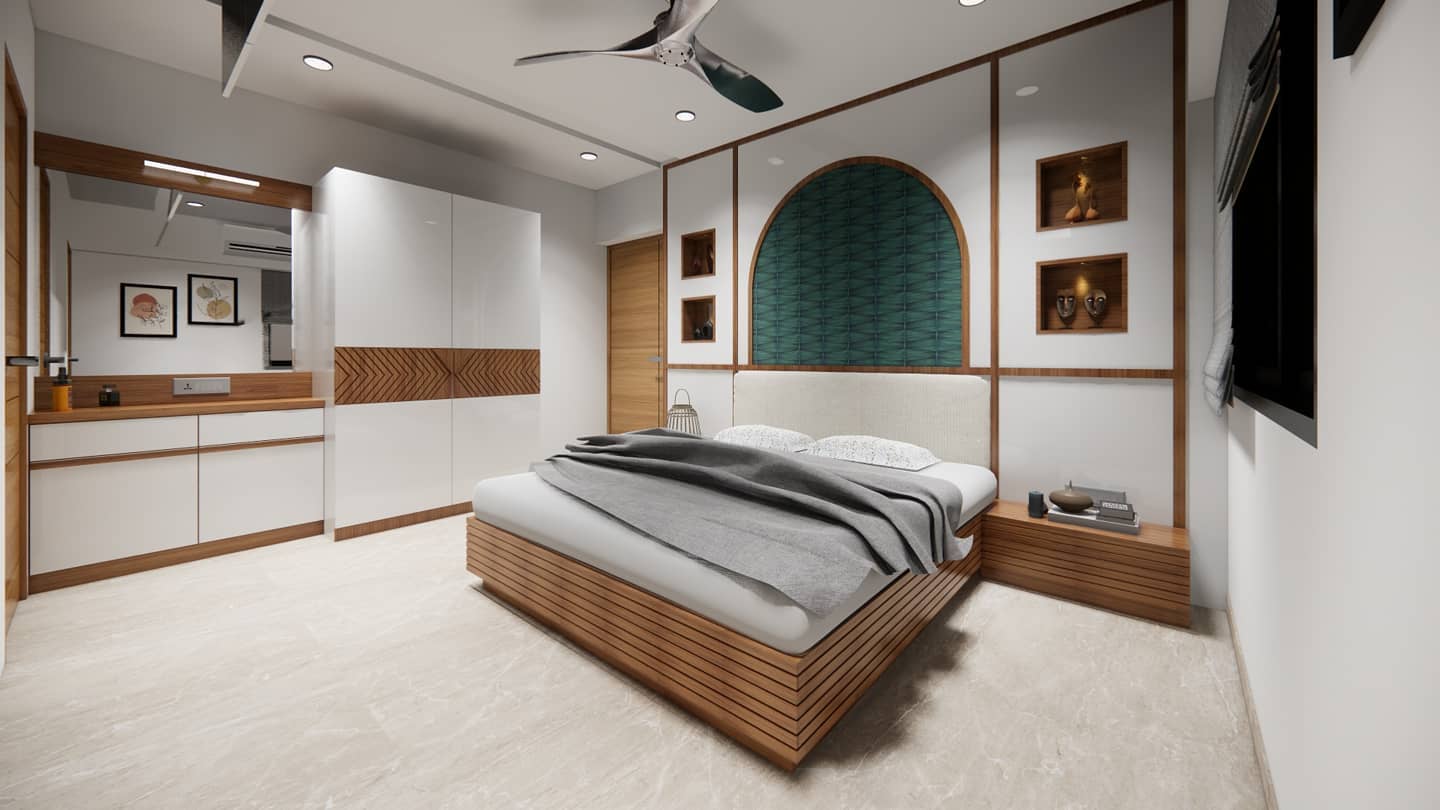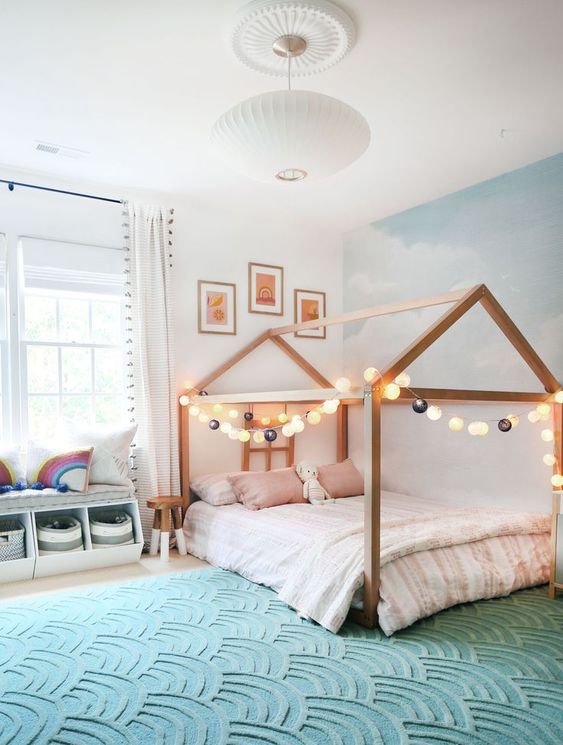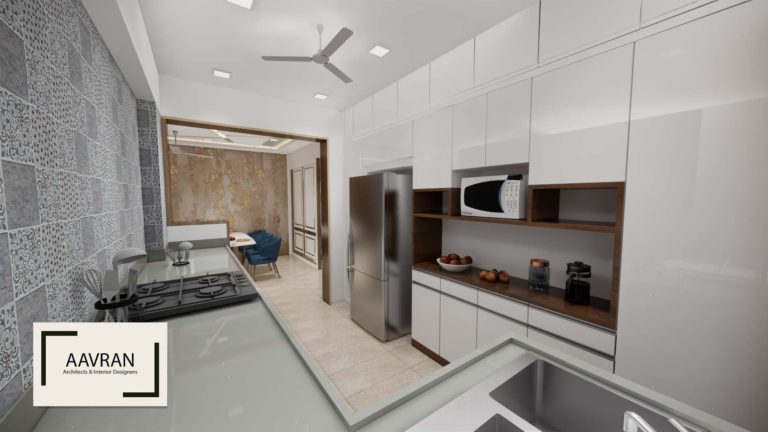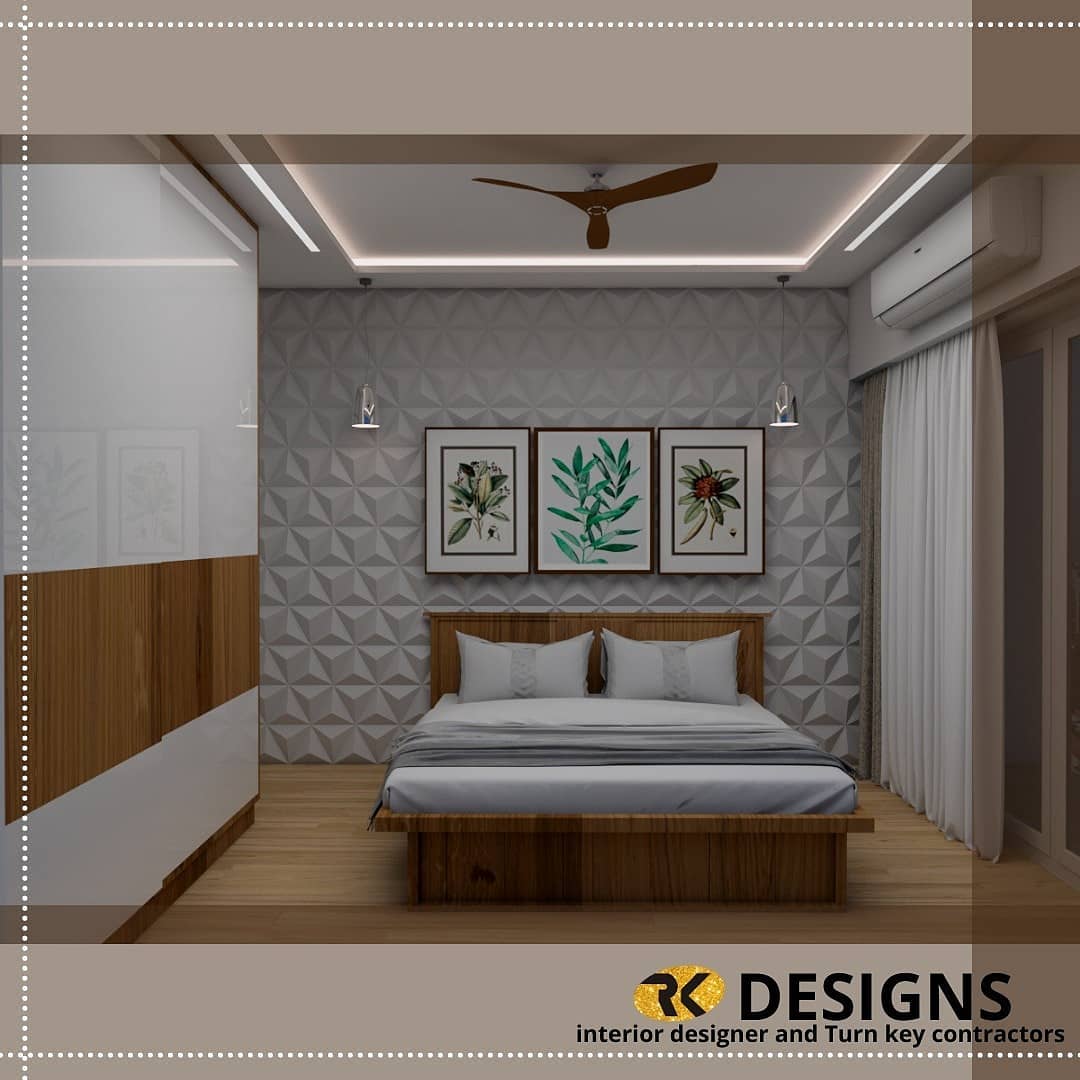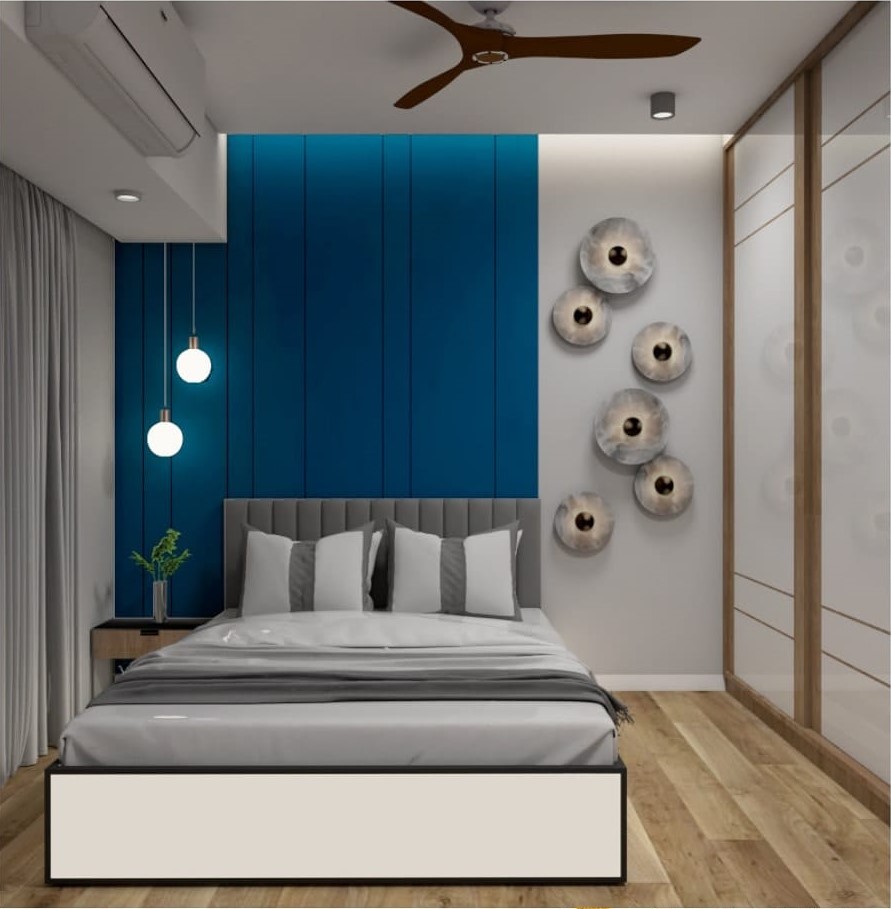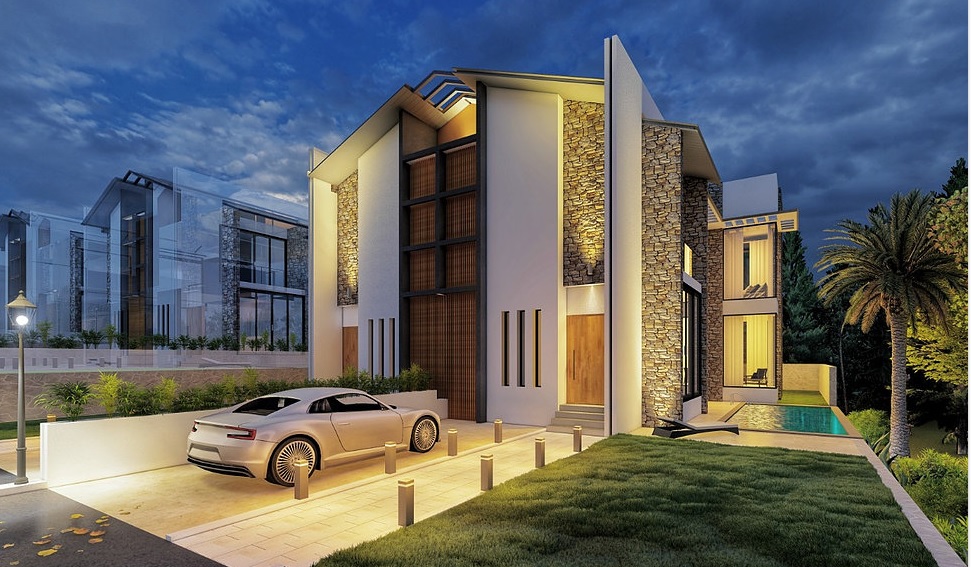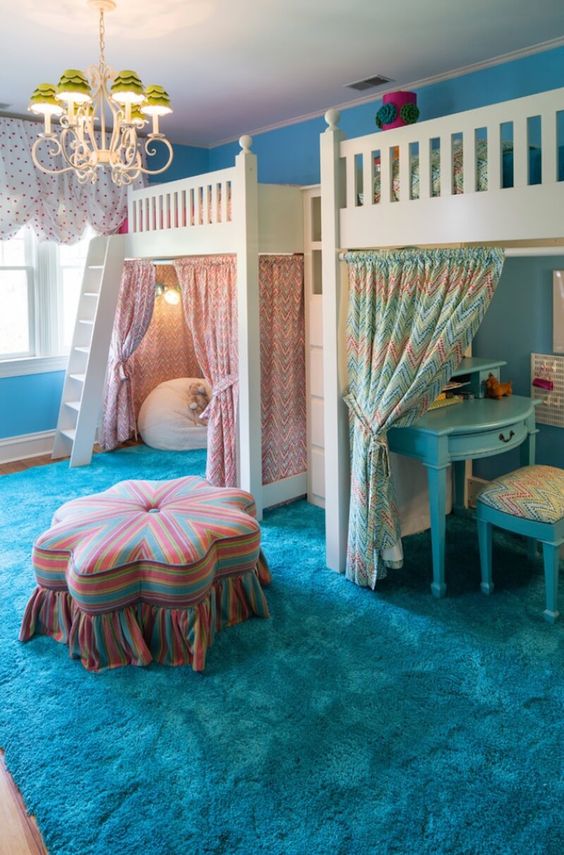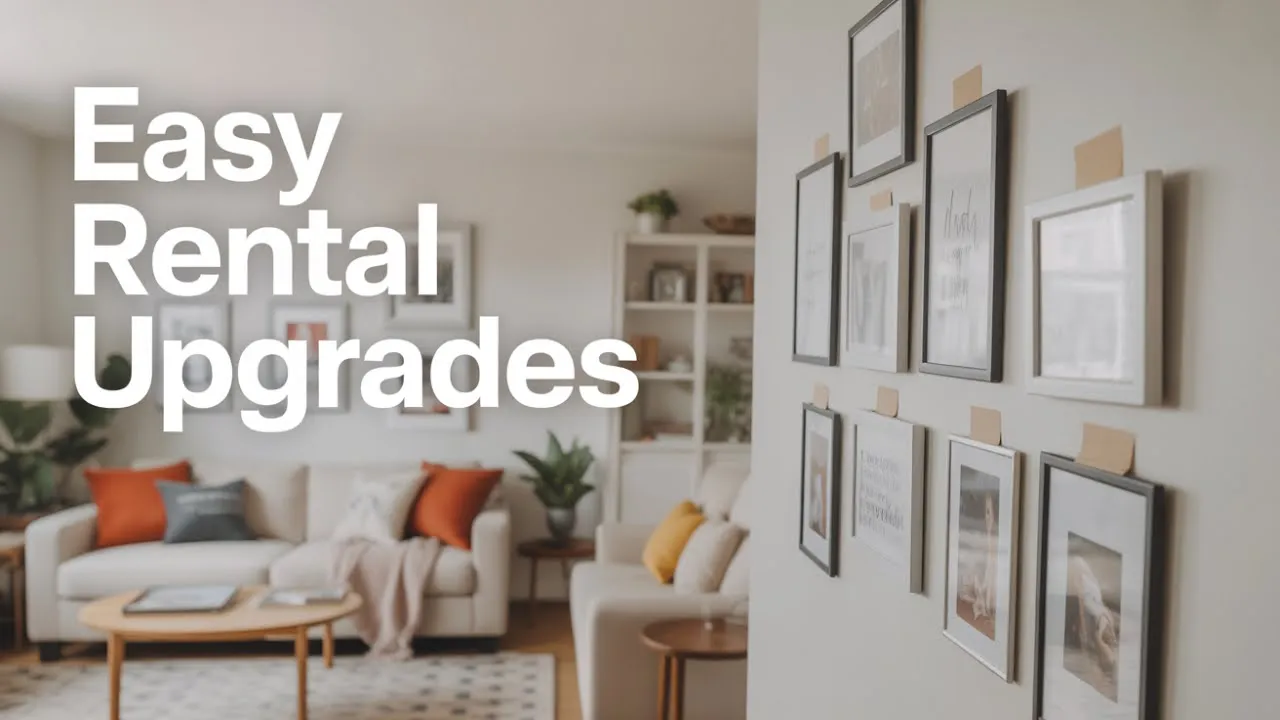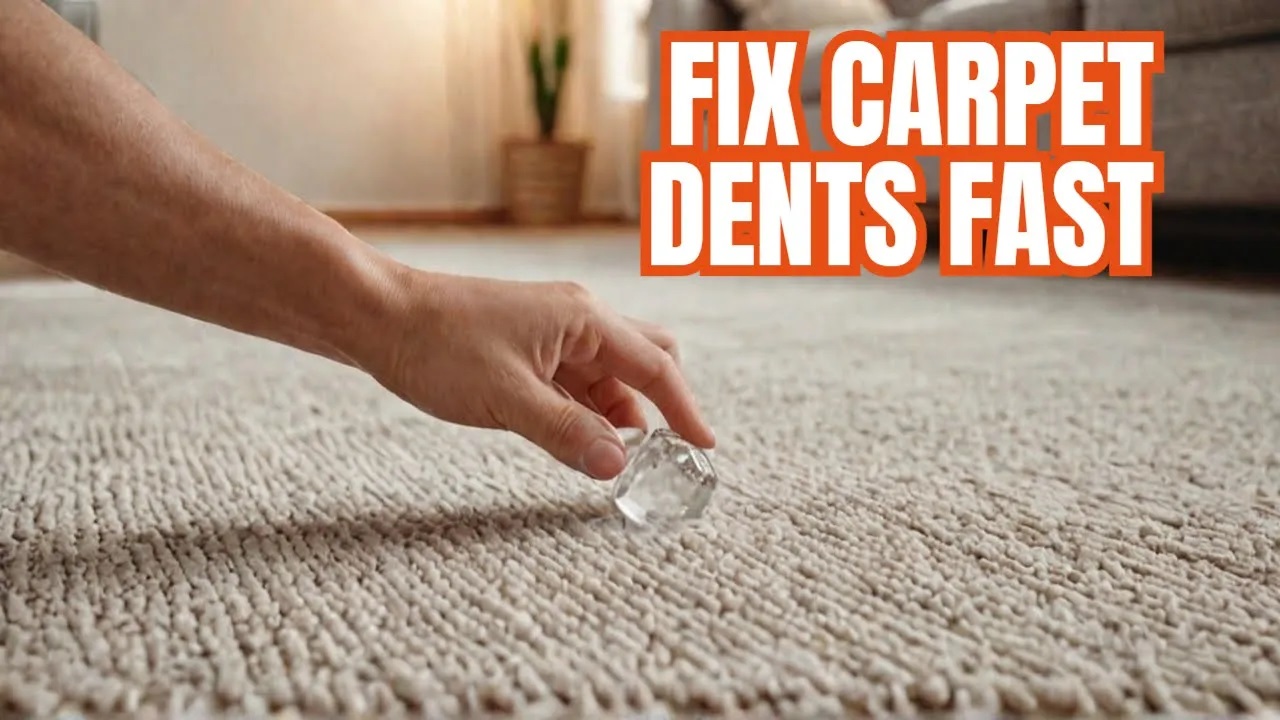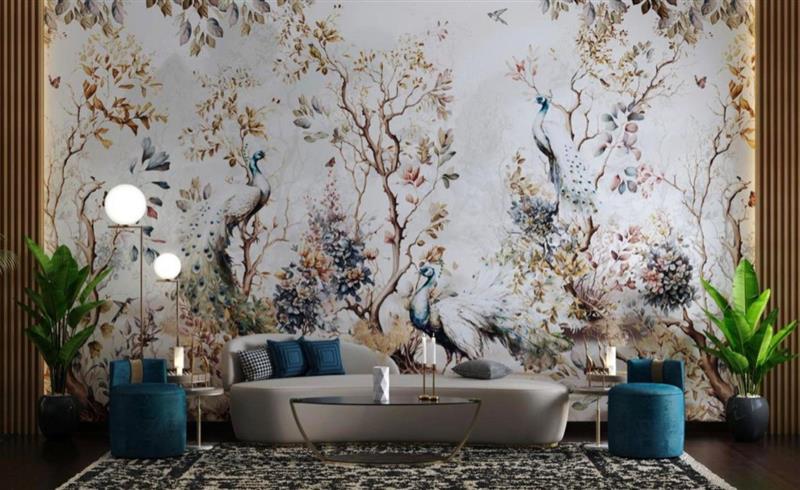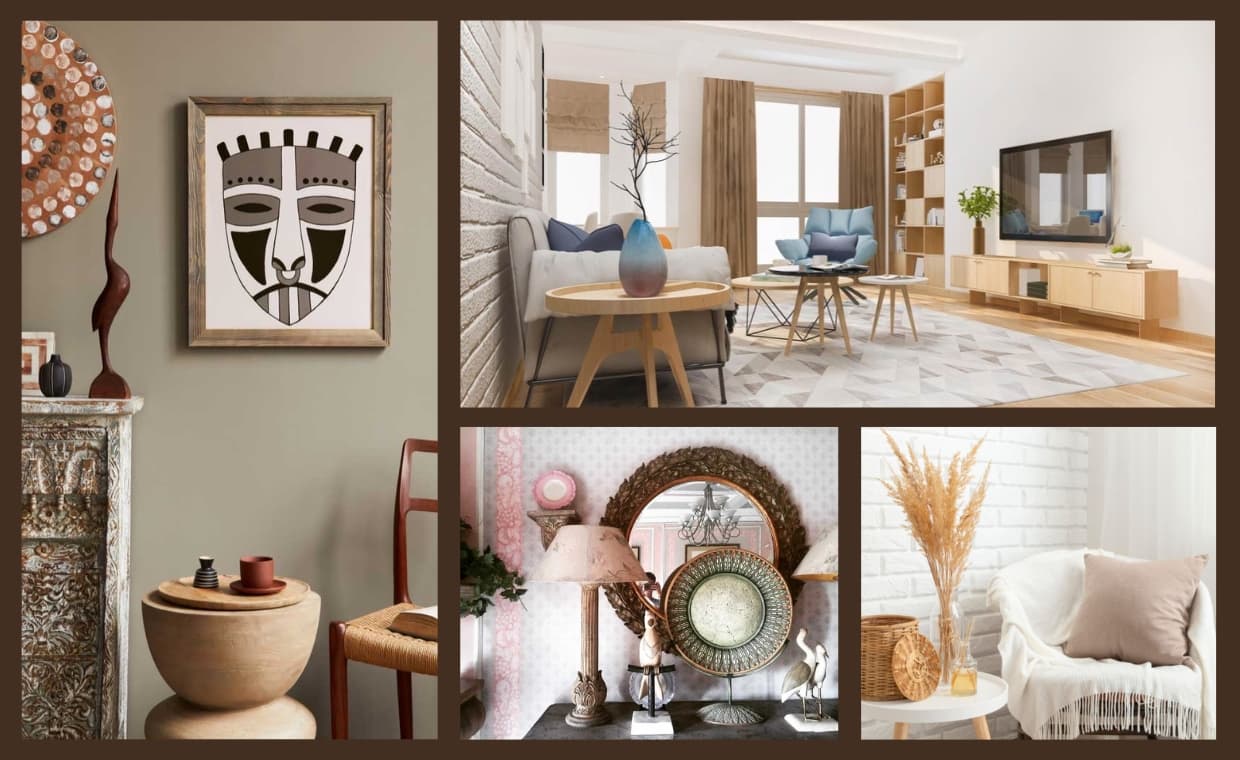
Table of Contents
“Less is more,” said architect Ludwig Mies Van De Rohe, foreseeing the direction of civilisation. Over time, functional closets replaced huge wooden cupboards, sleek LED TVs replaced bulky CRT TVs, and now, functional and minimal home decor is gradually replacing elaborate and cluttered interior designs.
Minimalism is all about prioritising the essentials and decluttering the design. Using fewer pieces of furniture and a minimal colour palette creates a peaceful, serene, and calming space.
It shifts the focus away from the space itself. For instance, the view from the window becomes more important than the decoration inside the room. A minimalist home design relies on a few materials, neutral colours, and an absence of excessive detailing, providing a pure and elegant aesthetic.
15 Minimalist Design Ideas to Spruce Up Your Home
1. Prioritise Function



Firstly, understand the functions of your room. Focus on enough seating space to accommodate guests, keep the workspace distraction-free, and in the case of bedrooms, maintain a calm and relaxing atmosphere.
Regardless of the room’s layout, the minimalist house interior should be airy and spacious while fulfilling its function. Minimalist room design emphasizes “form.” For instance, a dining area needs a table and chairs that interact harmoniously in terms of line, hue, and mass.
2. Sleek Clean Lines



Having clean, sleek lines becomes a must while designing a modern minimalist home decor. Replace arched doors with square-edged doors. Have straight-edge furniture and geometric decor for an eye-pleasing design. Avoid cluttering the floor.
Have furniture and objects with clear and defined lines or curves and flat surfaces. For example, cabinets without handles are more pleasing to the eyes than the ones with handles.
Consider tables and shelves with smooth, simple designs, as flat surfaces also help to create the impression of space. When it comes to fabrics, pick organic materials with a gentle, relaxed feel like cotton or linen.
3. Neutrals Only



A minimalist house decor approach embraces neutral tones. If you want clear, bright, and uncluttered aesthetics, choose white, beige, blush, earth, taupe, tan, and peach tones for your walls. But white is the most minimal.
Go for monochromatic colours with pastel shades of natural hues. Since the vibrant colour palette is unconventional for minimal design, you may have bold colours in textures and patterns. However, make sure the patterns and textures don’t interrupt the purity of the background colour.
4. Simple Accents



Simplicity is the key to minimal home décor, but that doesn’t mean you shun furniture and bold colours. The primary objective is to have simple, well-placed accents and not overcrowd the space.
Choose simple, single-focal elements rather than several smaller ones. For example, having a single large picture on your living room wall will create a better impact than several cluttered objects.
5. Multipurpose Furniture

Courtesy - Freepik - AI Generative


Invest in multipurpose furniture that serves both storage and decor functions to maximise space and maintain a minimalist home design. For instance, instead of storing your art pieces in a closet, hang them on the entryway wall to serve as a showcase and storage.
You can also incorporate recessed shelves to create additional space and maintain a minimalistic look. Avoid cluttering the room as too much furniture can take away from the simplicity of the room. Hence, go for multifunctional furniture.
Add storage to your bed, a sofa with a Murphy bed, a study with built-in shelves, a wardrobe with a concealed dressing area, a kitchen island with storage, a bookshelf as a partition, or a shoe rack with a bench in the foyer, and so on. Minimalist room design thrives on multifunctional elements that reduce clutter while enhancing efficiency.
Also Read: 11 Best Space-Saving Furniture Ideas for Small Space
6. Decluttering Elements
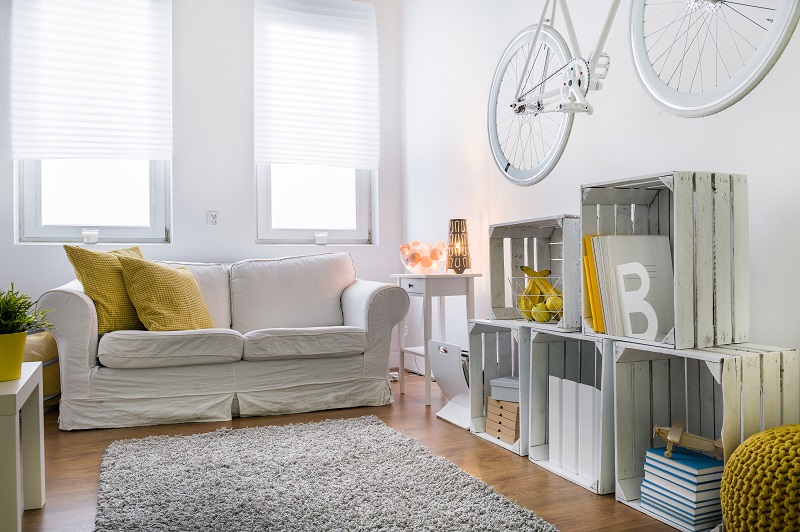


As per the theories, your lifestyle reflects your thinking. This means a cluttered environment represents your messed-up thoughts. Having a clutter-free space helps free your mind. Minimalist house interior principles dictate that anything not in use should be discarded or stored away to maintain a clean aesthetic.
Use your cabinetry to store as many items as you can. You can even use built-in cubbies and closets. Toys, blankets, linens, and extra dishes can all be stored away if they are not used frequently.
Decluttering helps to clean and purify your space. Keep subtracting elements until the space is not acting the way you want. Embrace a minimalist perspective on space.
Also Read: Minimalist Interior Design Style: 7 Interesting Ideas for Your Home!
7. Embrace Nature



Natural elements enhance a minimalist home design. Having a larger window in the room makes it appear warmer and bigger. It serves as a focal point in the room while offering a view of the outside. Imagine having a window in your dining room, allowing you to enjoy a fresh, open atmosphere while relishing your meals. Even a thin, floor-length curtain can enhance privacy without compromising natural light. Adding greenery to your room, balcony, and entryway brings a sense of life and creates a refreshing ambience.
Moreover, incorporating planters, pots, shrubs, and other indoor greenery elements enhances the aesthetic appeal of the space. A flowering plant adds a vibrant splash of colour to the room.
Also Read: Indoor Plants At Home – Six Spaces That You Can Utilize And How?
8. Create Focus

One can enhance the essence of minimalism using the focal point of the space. When we fill our space with multiple elements, they vie for the viewer’s attention, prompting the eye to wander and creating an impression of chaos.
Making a few focus points that combine various decorative elements into a single, unified element is one technique to counteract this impact. This could be a piece of furniture, a lighting fixture, wall art, a sculpture, a DIY object, display shelves, a decor item, greenery, a window, or any other striking element.
While entertaining guests, consider creating focal points in the dining room and lounge area. They spark a conversation and provide a way to elegantly display your prized possessions without compromising the minimalist aesthetic.
Also Read:
9. Simple Wall Arts



One of the best minimalist house decor approaches is wall art with simple patterns, like Bauhaus prints, floral designs, or sleek monochrome artwork. Maintaining a natural theme enhances the overall aesthetics of the room.
You can use either vivid patterns or simple black ones on white walls. Alternatively, you may choose different artwork pieces and display them in basic frames, particularly wooden ones.
You might incorporate a series of reflective surfaces or crystal wall art. These components reflect light, creating the illusion of a larger space.
Also Read: 15 Wall Decor Ideas to Refresh Your Space!
10. Functional Art



Functional art pieces contribute to the aesthetic and practical aspects of minimalist interiors. Select sculptures that also serve as lighting fixtures or room dividers. These pieces can serve as artistic focal points while fulfilling practical purposes. Decorative bowls, trays, and sculptures can double as storage units or light fixtures, blending beauty with practicality in modern minimalist home decor. Choose minimalist designs in wood or metal to complement the overall decor. Install wall-mounted art pieces that double as shelves or storage compartments. These can hold small plants, books, or decorative items while adding visual interest to the space.
11. Negative Spaces

It isn’t always necessary to buy new furniture or fill empty spaces to the brim to uplift the look of a room Often, a few modest and carefully chosen pieces are all that’s needed to enliven the nooks and crannies that feel bare. It is an opportunity to uncover the decor hidden in storage, restore vintage pieces, and repurpose items that might otherwise seem excessive.
Minimalism usually adds value in return, making negative space an essential element of design. Leaving space around a certain eye-catching piece of wall decor, an unusual chair, or a stylish side table allows it to stand out and command the attention it deserves. Use this approach to step up the look of your space and your sense of artistic expression simultaneously.
12. Subtle Statements



Statement pieces in a minimalist house interior should be simple yet striking. A single photo frame, a geometric coffee table, or a decorative shelf can create an impactful yet understated look.
Therefore, presenting them suitably is essential to making a lasting impression. Every series, seamless triptych, and statement piece offers an opportunity to share the stories that define your home and reflect what matters most to you. Don’t hold back, embrace bold choices and take creative risks.
13. Light and Airy Interiors



A light and airy design complements minimalist home decor. Stick to a consistent theme, remove excess decor, and opt for neutral tones with small pops of colour for balance.
Light furniture and free spaces can even add to the design. If you do decide to add colours to the area, try to go with a neutral colour scheme and add subtle pops of colour here and there rather than going overboard.
14. Minimalist Lighting



Lighting plays a crucial role in minimalist home design, emphasising clean lines and functionality.
Opt for recessed lighting fixtures embedded in ceilings or walls to provide ambient or task lighting without protruding elements. Choose pendant lights with minimalist designs, such as geometric shapes or simple metallic finishes, to serve as focal points while complementing the overall clean aesthetic.
Incorporate lighting into furniture or cabinetry for a seamless look. For example, under-cabinet lighting in kitchens or integrated LED strips along shelves can add ambiance without clutter.
15. Cosy Textured Furnishings



Use patterns and textures sparingly in a minimalist room design. Incorporate natural materials like cotton, linen, jute, or tatami mats to add warmth and depth while maintaining simplicity. Use prints as accent items and treat them like accessories. Choose patterns for your toss cushions or your drapes.
Consider using tatami mats, jute fabrics, and straw flooring to further integrate natural elements into your surroundings. A patterned carpet is an excellent choice, offering a much-needed change of pace in the room. Your upholstery can also feature natural prints.
Try experimenting with different textured materials for a wonderful minimalist interior design idea. To soften the geometric hardness of a minimalist space, mix and match velvet furnishings, wool or fur blankets, and beaded throw pillows. Just make sure the pieces align with the neutral colour palette you’ve chosen!
16. Eliminate Ornamental Pieces



Minimalism supports quality over quantity. Heavy decoration and elaborate detailing make the place gaudy. On the other hand, simple elements make the place cosier.
Keep your modern minimalist home design simple yet trendy with storage hutches with decorative doors, coffee tables with colourful legs, and footstools in geometric patterns.
Consider investing in one or two high-quality items that will last many years rather than buying inexpensive, trendy furniture that will collapse sooner.
17. Mix modern and natural materials



Combining modern and natural materials is the best minimalist room design tip. The traditional designs are rich with intricate detailing, which makes the places heavy, while contemporary design lightens up the space.
Moreover, natural elements make the space greener and airier, thus enhancing the minimalism of the space.
18. Utilize Vertical Space



We often overlook vertical space in minimalist design, but it has the potential to significantly enhance both storage and aesthetic appeal. Install floating shelves on empty walls to display books, decorative items, or plants without taking up floor space. Opt for simple, clean-lined designs that blend seamlessly with the wall.
Utilise tall, narrow bookcases to maximise vertical storage. You may place them in corners or against walls to store books, files, or display items while keeping the floor clear. Consider wall-mounted cabinets in kitchens or bathrooms to store essentials while maintaining a minimalist look. Choose cabinets with handleless designs for a sleek and modern appearance.
Also Read: Space-Saving Apartment Design: The Essential Interior in a Studio Apartment
19. Hidden Storage Solutions



Hidden storage helps maintain a clutter-free environment while maximising space efficiency. Use bed frames with built-in drawers or slide-out storage containers to store items such as clothing, bedding, or shoes out of sight.
Incorporate ottomans or benches with hidden storage compartments. These can serve as seating options in living rooms or entryways while storing blankets, shoes, or other items. Install panels or sliding doors that blend into walls to conceal storage spaces. This can include storage for coats, shoes, or even home office supplies in multipurpose rooms.
Also Read: How Minimalistic Designs in Homes are Creating a Large Impact in 2021?
Let’s Minimalize!
Although minimalist architecture and product design can be inexpensive, environmentally friendly, and ultimately contribute to good design, it has also become associated with the esoteric pursuit of the ideal object, a luxury that only a select few can afford, sometimes leading to its brand of endless excess. Minimal home decor is not just a trend but a lifestyle that promotes simplicity, organisation, and harmony with nature.
Embrace the elegance of modern minimalist home decor by decluttering, focusing on function, and incorporating clean lines, neutral palettes, and carefully curated accents.
Consider incorporating minimalism into your home as much as possible and connect with nature in the process.
FAQs Related to Minimal Home Decor
1. How Do You Design a Minimalist Design?
The first step to minimal design is to have the bare minimum elements: clean lines, minimalist furniture, clutter-free space, neutral colours, and simple textures. Make use of negative space and provide a focal point in the room.
2. What Goes with Minimalist Interior Design?
To have a minimal design, invest in decluttering the design. Have simple furniture, neutral colours, and clean lines. Use modern lighting, accent elements, and simple wall art. Plenty of space is a must.
3. What Is a Good Minimalist Design?
Prioritising the essentials is a crucial element of minimalist design. To achieve a pure form of elegance, a minimalist building, product, or interior design is reduced to its essential components, created using few materials, neutral colours, simple forms, and avoiding unnecessary ornamentation.
4. How Do You Achieve Minimalist Style?
In a minimalistic style, only the most essential features remain. Avoid including unnecessary objects in your minimalist décor or design. Consider that you can conceal items you don’t need. Realise that every little detail matters. Embrace the space and don’t try to cram it. Accept the beauty of empty space. Use only a few colours, and avoid overloading the space with too many hues.
5. What Does A Minimalist Design Need?
Appreciate slick lines. A minimalist home must have naked walls, furniture with clear bench tops, and furniture with simple lines. Things and furnishings can now breathe since the clutter is gone.
Also Read:
Know About The Wonder of Urban Minimalistic Décor Style
A Guide to Cosy Minimalist Interiors with Vanilla Girl Aesthetic
Author Bio
Saili Sawantt – She is an Architect and Interior Designer by profession. Writing is what she treats as her passion. She has worked as an Architectural Writer, Editor, and Journalist for various design as well as digital portals, both national and international. Formerly she has also worked with Godrej Properties Limited (GPL) Design Studio, Mumbai, due to her keen interested in learning about Sustainability and Green buildings. Apart from this, she runs her blog ‘The Reader’s Express’ and is a practicing Architect & Interior Designer.




